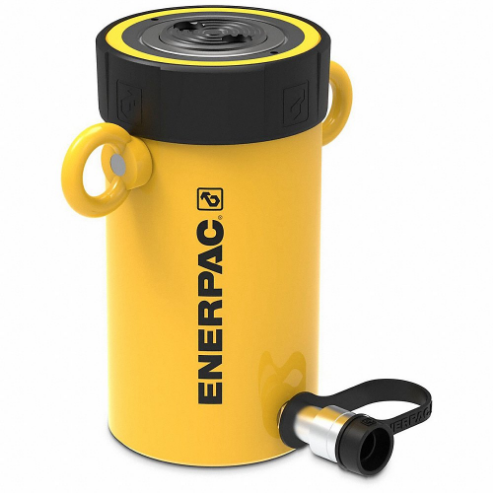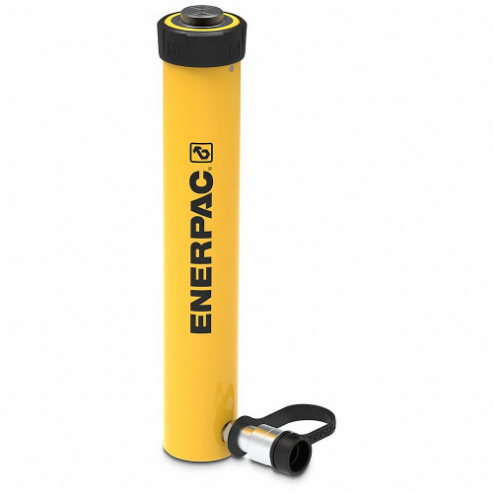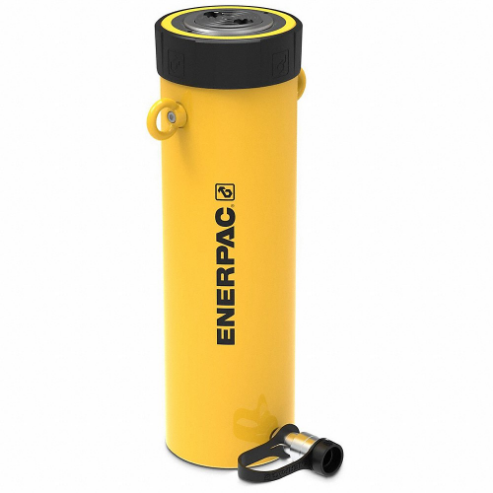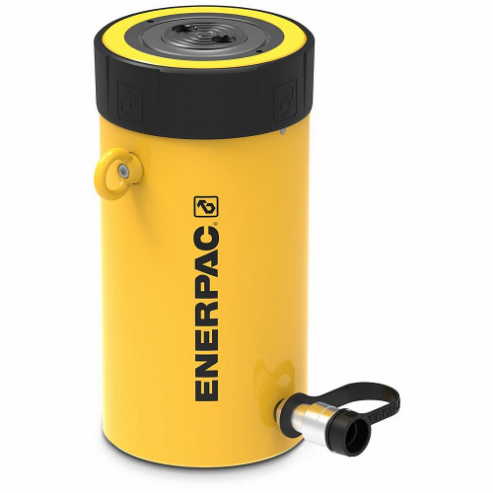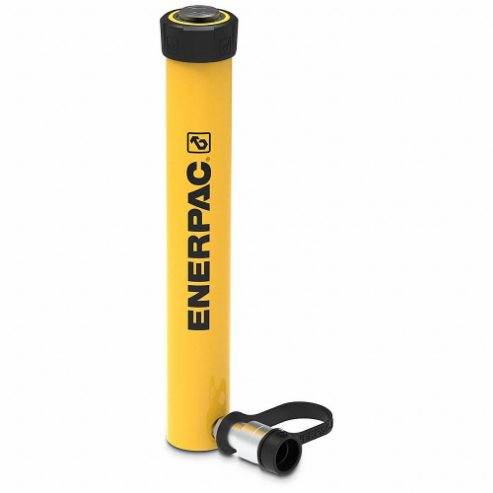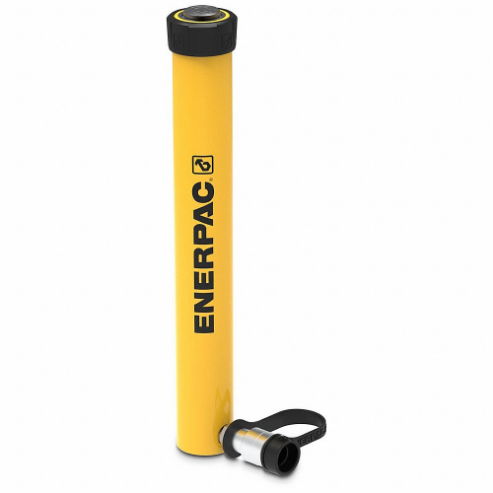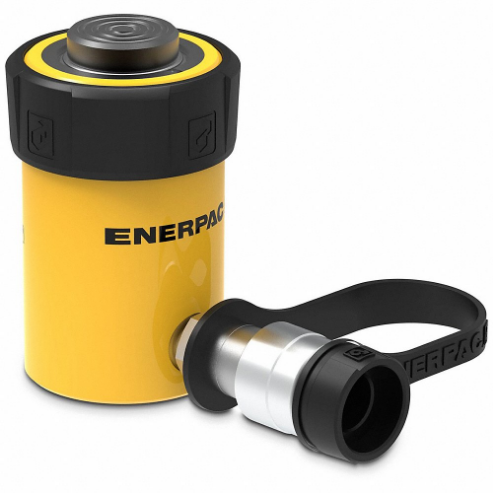Enerpac RC 756 general-purpose hydraulic cylinder is used to lift heavy machinery or equipment, support structural components during construction or maintenance projects, or provide controlled force for pressing or bending tasks.
Working Mechanism:
- This cylinder utilises a hydraulic mechanism to generate force and perform heavy-duty tasks.
- When pressurised hydraulic fluid enters the cylinder through the inlet port, it pushes against the piston, creating a force within the cylinder.
- The piston, connected to a rod, translates this force into linear motion, extending or retracting the rod as required.
- The cylinder's design incorporates high-strength materials and precision machining to ensure durability and efficient power transfer.
- The hydraulic fluid, typically oil, is contained within the cylinder's sealed chamber, preventing leaks and maintaining consistent performance.
Features:
- This unit includes a strengthened stop ring for improved side load resistance and durability.
- It features a trio hybrid pre-tensioned spring system to provide faster retraction.
- This cylinder offers a plunger wiper for reduced contamination and extended cylinder life.
- It has collar & plunger threads with base mounting holes for enhanced stability and easy fixturing options.
- This unit includes a CR400 coupler, collar, dust cap, and thread protector for improved convenience & protection.
- It has high-grade polyethene seals for durable solutions with low wear characteristics, ensuring a long service life.
- This cylinder has steel construction with baked enamel finish for structural rigidity and resistance against corrosion.
Frequently Asked Questions:
Q. How are hydraulic cylinders better than pneumatic cylinders?
A. Hydraulic cylinders utilise hydraulic fluid to generate linear motion, making them more efficient and powerful than pneumatic cylinders.
Q. How do I choose the correct hydraulic cylinder for my application?
A.
- Determine the required force & load capacity for your task and choose a hydraulic cylinder with a suitable rated capacity.
- Consider the required stroke length and select a cylinder that meets your specific application requirements.
- Choose a cylinder with a maximum pressure rating that exceeds your needs.
- Evaluate the available space & mounting options to select a cylinder with a compatible mounting style.
- Assess the desired speed of cylinder movement and choose a cylinder with the appropriate speed capabilities.
- Consider environmental conditions such as temperature, corrosive substances & moisture and select a cylinder with appropriate seals, coatings or materials.
Q. What are the differences between single-acting and double-acting hydraulic cylinders?
A. A single-acting hydraulic cylinder applies force through only one side of the piston. The piston generally extends by hydraulic pressure from the pump and then retracts using the load or inbuilt spring. A double-acting hydraulic cylinder, on the other hand, contains two ports to apply force in two directions for both expanding and retracting the piston.
 Change Country
Change Country
